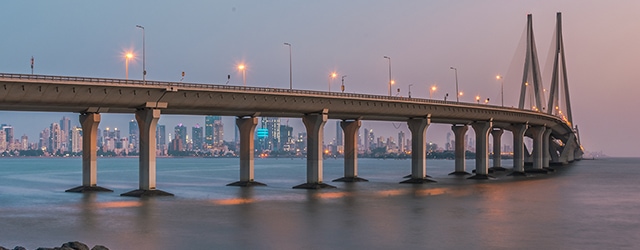Policy changes and consistent growth have positioned India to draw fresh investment.

Just a couple of years ago, India was one of the “Fragile Five” economies—alongside Brazil, Indonesia, South Africa and Turkey—deemed too reliant on fickle foreign investment dollars that evaporated when developed markets strengthened. Since then, India has taken steps to strengthen its economy and enhance its appeal to investors, so that now, with inflation lower, considerable improvement in the current account deficit (now at 1%) and a solid build-up in foreign reserves, the nation stands at the cusp of reinvigorated growth.
“India is poised for a broad-based recovery,” says Hiren Ved, chief investment officer at Alchemy Capital Management in Mumbai, which offers Indian equity funds.
India remains the fastest-growing economy across Asia and the fastest-growing large economy in the world, with GDP jumping about 7%7.5% annually, according to the OECD. Low oil prices have been a helpful boost, and, along with renewed targeting from the Reserve Bank of India (RBI), have helped to reduce inflationary pressures, says Gonzalo Pángaro, lead portfolio manager for T. Rowe Price’s Emerging Markets Stock Fund and chairman of the strategy’s investment advisory committee.
Indeed, “the conditions for becoming involved in India are better than ever,” says international tax specialist Cecil Nazareth of Nazareth Consulting. The government’s willingness to enforce the rule of law and encourage foreign direct investment has brought a new wave of capital into India. Successful offerings of “masala” bonds (rupee-denominated offshore debt), a spike in cross-border M&As, and financial and legislative steps taken to boost domestic consumption and infrastructure building are the keys. With the rupee near historic lows relative to the dollar, the attraction of cross-border M&As has risen sharply.
India is “a prime target for investment” globally, notes Mark Weinberger, global chairman and CEO of EY, the global consulting firm. In the first quarter of 2016, the value of M&As involving Indian companies rose nearly 63%, to $7.8 billion, spurred by big-ticket disinvestment transactions, according to EY, in its most recent report on Indian M&A. There were 245 deals announced, compared with 219 in the same period a year ago. “Companies from the US continued to be the most active counterparts for Indian companies in the cross-border transactions,” according to EY. “During the quarter, players from the US were involved as acquirers in 10 in-bound deals and as targets in 15 out-bound transactions.”
Cyclically, India has been challenged by stalled investment cycles and anemic credit growth, but recent steps to deal with many of the negatives associated with the past cycle’s credit expansion will help the future outlook, says Pángaro. One such step is the move to establish a unified tax regime, replacing dozens of state and local tariffs with a single nationwide rate.
The latest idea from India’s Pay Commission—an intermittently appointed entity that reviews government salaries—will result in a 23.6% boost in payments to central government employees and pensioners that represents 0.7% of GDP and “should help boost domestic consumption,” says Ved. The increase is expected to spread to state governments and public-sector enterprises, along with renewed investments in roads, railways and defense. As an example of those investments, in late August, India signed the bilateral Logistics Exchange Memorandum of Agreement (Lemoa) with the US to give the militaries of both countries access to each other’s facilities for supplies and repairs. Although no financial values have been attached to Lemoa, it is expected to generate a significant windfall for defense and defense-related businesses in India. India is also attractive for ordinary investors, says Nazareth. Although fixed-income yields in the US have plummeted, CDs in India continue to offer rates as high as 10%. Even after tax considerations, Indian bonds can yield returns far greater than those in the US and Europe.
Enthusiasm for high fixed-income rates has carried over into the corporate market. Despite initial concerns that liquidity and trading issues would cloud the issuance of “masala” bonds, those fears seem to have been somewhat allayed. In July, India’s Housing Development Finance Corporation issued 30 billion rupees’ ($447 million) worth of three-year rupee bonds in London at an annualized yield of 8.33%, demonstrating the market viability of masala bonds.
The success of the Housing Development Finance offering made it possible for India’s largest power group, NTPC, to raise 20 billion rupees in masala bonds in August. NTPC added a wrinkle to the offering by labeling it “green.” NTPC, which originally looked to raise 10 billion rupees, sold five-year bonds to yield 7.48%, attracting 29 billion rupees. Sixty investors were involved, up from the 40 that participated in HDFC’s three-year deal.
A Goldman Sachsbacked investment group recently agreed to invest $220 million in Essel Highways, a domestic road construction company. Essel Infrastructure, the company’s holding group, raised another $132 million for its solar energy project platform from international investors. For the past decade or so, India has found itself drawn into a financial and trade arms race with China. But with China now facing a series of challenges, domestic and global, India may have finally moved forward.



